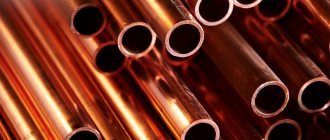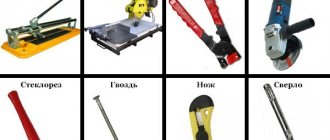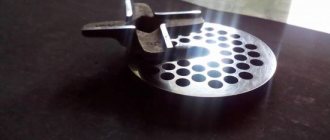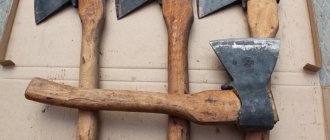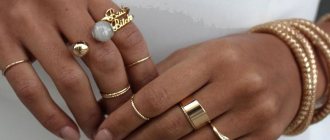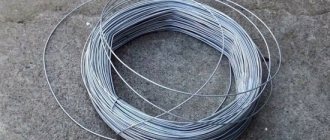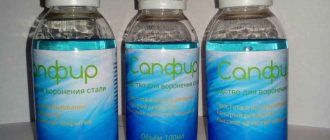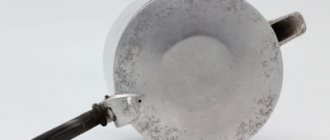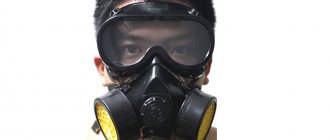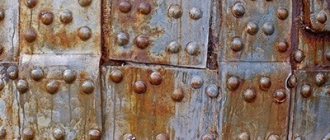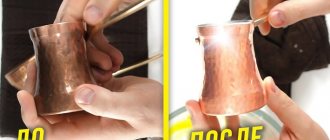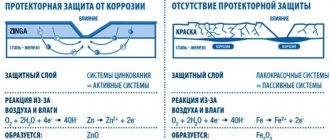What is rust and what is its danger?
When interacting with water and air, iron begins to oxidize and the result is a bright orange-brown coating - rust, which indicates the beginning of destruction of the material and product/structure. Neither pots and pans, nor plumbing and kitchen fittings, nor clothing are immune from rust. What can we say about the metal objects around us, tools, cars, various equipment, etc. To slow down or even completely stop the degradation process, you need to remove the deposits that have formed. How to act in different situations - read on.
Purification of elements by complete immersion in phosphoric acid
If you have a sufficient amount of the product, you can use the full immersion method to remove rust. To do this, you first need to degrease the element to be cleaned using a detergent composition, and then wash it thoroughly. After this, pour 100 grams of 85% acid solution into the prepared container and add 1 liter of water. The element to be cleaned is immersed in the solution for one hour, stirring the product periodically. Then the product must be removed and washed well. After such cleansing, the product is washed with another solution consisting of 50% water, 2% ammonia and 48% alcohol. Then the product is washed again with plain water and dried. All stages must be performed in strict sequence. If you do not degrease the product, the cleaning will be uneven, since the product may not corrode normal stains, and additional cleaning will be required. In this way, you can clean any products with varying degrees of rust, but the thicker the coating, the more time you need to keep the element in the solution. If the element is not dried after washing, hydroxide appears on it. Drying can be done using any method.
Mechanical cleaning
The essence of the method is to remove plaque using improvised or special devices. In practice, the following options are used:
Wire brushes, sponge brushes
In places where there is a lot of rust, on welded joints and seams, cleaning is done manually. The disadvantages of the process are rusty dust and scale residues.
A wire brush can be used to clean concrete slabs in your yard, cement floor, or wall. The stain is old - a product based on oxalic or other acid would be a good addition
Paint or dish scraper, metal sponge
They act similarly to sandpaper. It all depends on the age of the corrosion and accessibility to it. If the rust layer is thick, then even a screwdriver will do.
Aluminium foil
The material is almost always at hand, and it is very easy to use against surface corrosion stains. We crumple a small piece of foil well and make a dense, easy-to-work ball, which we will use to clean the surface. To make cleaning more effective, you can apply baking soda, lemon, vinegar, etc. to stains.
an old toothbrush can be used
Abrasive materials
In this case, sandpaper and sanding discs are used. You need to start with coarse-grained materials, gradually moving to the fine fraction. The work can be done manually, or you can use a power tool equipped with a special attachment. This will benefit the cause: more speed, less effort and 100% quality.
Sandblasting gun
To operate the installation, you need the gun itself to direct the sand, a compressor (the supply must be under pressure) and a tank with construction or river sand. The advantages of the method are the ability to reach the most inaccessible places, complete cleaning of the metal from old paint, carbon deposits, and scale.
You need to understand that such material processing can be done independently or used in combination with the following options. Alternatively, clean the surface using a mechanical means, and then finish the job using “chemical” substances. You need to look at the situation. In fact, it is not very wise to try to use more rust converter when you can get by with less simply by brushing it first.
Rust preparations from the store
Ready-made rust removers are sold in hardware stores or specialized building materials and auto chemical stores. Such cleaners are produced by different manufacturers and are used for household and industrial purposes.
Instructions for using each specific drug are usually written on the packaging. Exposure time and dosage may vary significantly. So before using each new bottle, it is better to carefully study the instructions.
The main components of most of these drugs are phosphoric or oxalic acid. The disadvantages of such products include their considerable cost and not always convenient form of release. Usually they are enough to process only a small surface. Such products are designed not so much to eliminate rust as to prevent its occurrence. If red spots have already appeared, it will not always be possible to remove them.
Most often, rust converters are sold in the form of aerosols. Very often, car owners use them as a primer for treating metal surfaces before painting.
Traditional methods
Someone who is skeptical is ready to argue that it is unlikely that the situation with rust can be solved with improvised means, compounds that, as a rule, are found in every apartment. It turns out that it is possible. Many have independently tested these methods in practice, actively use them and share their knowledge with friends.
Baking soda
This product, which is present in all kitchens, can be safely added to the list of universal ones. In addition to cooking, it has proven itself excellent in removing stubborn stains from coffee, green grass, blood, and also in cleaning metal from rust. To prepare the composition you will need: baking soda and water . Taking into account the processing area and the degree of damage to the material, the required amount of ingredients is selected: the finished mixture should have a moderately thick consistency - store-bought sour cream.
Apply the mixture to the surface of the stain and leave for 25-30 minutes. This is the optimal time to remove a small amount of rust and after it has passed, it is enough to wipe the treated area with a damp cloth. The attempt was not very successful - then the procedure should be repeated, and in case of “overgrown” contamination, it is better to first use a metal scraper.
You should not place high hopes on this method if there is a large area of damage. But you can safely use it when you need to quickly, one-time get rid of a small spot of rust. Don't forget about other types of soda.
Baking and soda ash
The product is suitable for cleaning enamel bathtubs. baking soda and soda ash in a small amount of water in a 1:1 ratio (2-3 tablespoons is enough). Cover the affected area with the resulting mixture and leave for 1.5 hours. The next step is to apply 50 g of bleach and the same amount of vinegar on top. While waiting for the cleansing reaction, we leave all the products for another 0.5 hour, after which we wash everything off with warm water.
For those who have a cast-iron bathtub, you can use a mixture of soda ash and laundry soap (1:1). Rub the soap on a coarse grater, add soda, warm water, and bring the mixture to a homogeneous thick consistency. Apply the resulting paste to the damaged surface for 1-1.5 hours, then rinse with water. If the rust has not been touched for a long time, it has become old, then the proposed composition can be improved with the help of ammonia . Its quantity is the same as the other components. Let the renewed slurry sit on the rust stain for 1.5 – 2 hours, then wash off with warm water.
Caustic soda
You will have to work hard to prepare a solution that contains the specified alkali (caustic soda, sodium hydroxide), but it is worth it. To create the product we take: water - 300 ml, caustic soda - 50 g, formaldehyde 40% - 250 g, ammonium - 50 g . We dilute the resulting paste in 1 liter of water and lower the rusty parts into the ready-made solution. Cleaning time can vary from 15 to 30 minutes, since it directly depends on the degree of damage to the material. The final stage is rinsing generously in hot water and wiping dry. This method is good for removing rust from steel products.
Laundry soap and raw potatoes
Every housewife will be glad to quickly and without unnecessary problems remove small rust from the oven, baking sheet or stove. This is not difficult to do. Take raw potatoes, cut them in half, be sure to salt them and grease them with soap. We use the resulting part of the vegetable to eliminate the problem, like an abrasive sponge with an additional element - oxalic acid. Sometimes during the process you have to renew the cut, soap it and continue working, or you can leave part of the tuber on the corrosive area for 3-4 hours. Vegetable to cope with the task.
During the season, when potato tops are still green and juicy, they are used to create an anti-corrosion composition. Fill a 3-liter jar halfway with tops, add hydrochloric acid so that it just covers the greens. Stir the future inhibitor for 15-20 minutes, then drain, filter and you can treat “red” spots
Ketchup
Tomato sauce, paste or ketchup - with their help, any woman will conquer rust stains. The secret of the wonderful power of the products is quite simple: tomatoes contain a considerable amount of the same oxalic acid, which destroys rust. In addition, many preparations contain citric acid as a preservative, which only enhances the effect of its friend. Apply sauce, ketchup or juice to the surface with rust, wait 20-40 minutes, sometimes let it sit for a couple of hours. Then rinse and wipe dry. The method works successfully on the surface of the bathtub, and is also useful when cleaning cutlery (forks, knives, spoons) and other metal utensils.
Fish fat
Some craftsmen and car enthusiasts have made this useful product work for themselves. Fish oil is much more active than its fellow fats in dissolving the rust component – iron hydroxide. Under the influence of the first (1.5 - 2 hours), the rust softens and is quite easy to remove. In addition, penetrating well into the depths of the damage, fish oil forms a thin protective film that blocks the access of air, stopping the process of metal oxidation and destruction of the part.
When the problem, even a small one, but there is noticeable damage to the paintwork, a very fast and, at the same time, correct way to get rid of rust is needed. The best options are a rag soaked in kerosene , or a swab with a mixture of crushed charcoal and machine oil . The advantage of the latter is simultaneous cleaning and polishing of the surface
Pork fat
The method is old, but it will help keep metal tools clean and in good working order. Add camphor (2 g to melted pork fat (100 g , mix until smooth, carefully skim off the foam and add powdered graphite . Apply rubbing movements to the instrument and leave for 24 hours. Then we rub the tools with a woolen cloth and everything is in order.
Graphite powder in combination with some greasy product, for example, Vaseline , is an excellent anti-corrosion protection for threaded nuts, screws, etc. Even after a long stay outdoors, in snow or rain, the treated parts can be easily unscrewed
Paraffin
Another way to treat parts against corrosion. After all, the first thing that comes to mind when you hear the word rust is iron. Not quickly, but effectively, you can treat metal elements with a paraffin solution (saturated). Paraffin shavings are dissolved in a container with kerosene until saturated (maximum concentration). The solution will be ready after seven days. The part is kept in it for several more days and the rust is removed without any problems.
Coca Cola
World-famous sodas Coca-Cola, Pepsi, Sprite, Fanta are multifunctional drinks. They not only quench thirst well, but are often used to clean various surfaces and remove various stains and rust from them.
Do you want to clean the red stains from the drain tank? Please. Take: 2 liters of Coca-Cola, 450 g of soda, 120 g of citric acid and 45 ml of vinegar , mix everything and pour it into the tank overnight. In the morning you will have to work a little with an old toothbrush to clean small parts, and then simply rinse the entire structure inside with water.
Having picked up Cola, you need to know that if the surface is chrome or sanitary ware, then there will be no problems with cleaning, but if the rust is directly on the iron surface, then you will have to tinker and make an effort
It is also possible to stop the destructive process on coins and cutlery. Place small items in pre-prepared dishes, fill with soda, and leave for two days. The degradation of the material will be much reduced; if necessary, the process can be easily repeated again.
More than once men have encountered such a problem as “stuck” rusty bolts. And you need to unscrew them. Therefore, we take a cloth, soak it well in the drink and wrap it around the part itself or the entire fastener so that the liquid, by any means, slowly gets inside the fastener. Phosphoric acid will do the trick.
"Alka-Seltzer"
The analgesic drug copes well with such a problem as rust. The explanation for this is the composition of the drug: two types of acids (citric, acetylsalicylic) and sodium bicarbonate (baking soda). To ensure that all the ingredients work in the right direction, crush the tablet and add just a little water to get a “mush”. Apply the resulting mixture to the rust stain, wait for some time (possibly up to 2 hours), and remove the residue with a sponge or cloth.
If cutlery or small parts need cleaning, then take a convenient container (bowl, basin, jar, etc.), fill it with water, in which we dissolve the famous anti-hangover remedy in the amount of 4-7 tablets. Dip the selected items into the resulting solution and leave for 15-25 minutes. Afterwards, rinse well, wipe, and use.
Formalin
You can clean the rusty surface of a part in 30-45 minutes if you prepare the following solution: 200 g of formaldehyde, 80 ml of alcohol, 500 ml of water . The object is dropped into a container filled with the specified liquid and soaked.
Glycerol
Excellent products for colored clothes: glycerin with dishwashing detergent , glycerin with chalk in equal proportions, glycerin with tooth powder . Each mixture can combat rust stains. Bring the mixture to a creamy consistency with water, apply to the problem area, and leave for a day. After 24 hours - thoroughly wash and clean item.
Hydrogen peroxide
Quite often, hydrogen peroxide and ammonia are used in everyday life. But perhaps not everyone knows that this couple is a very good tool for removing rust in the bathroom. To clean, you need to take: hydrogen peroxide - 50 g, ammonia - 100 g . Combine the ingredients in a prepared container, moisten a rag, tampon or sponge in the resulting mixture, treat the corrosion stain and let stand for 15-20 minutes. Then rinse with warm water.
Many housewives have adopted another method to clean the same bathroom. From three components: hydrogen peroxide - 100 ml, water - 300 ml, gelatin - 70 g , the mixture is prepared and infused for a quarter of an hour. When the mass has reached the desired viscosity, it is applied to the affected area and left for 10 hours. It’s very convenient to just leave it overnight and then rinse everything off with warm running water in the morning.
To remove rust from metal parts, a composition consisting of: 100 g of peroxide, 30-40 g of citric acid, 20 g of salt (level tablespoon) is suitable. Pour the resulting solution into a convenient container and safely lower the rusty items into it. The onset of the reaction can be noticed almost immediately, and after 2 hours the result is noticeable. Products are easily freed from red oxides.
Diesel fuel
This cleaning is well known to those who deal with nuts, screws, keys, screwdrivers, etc. To remove rust, diesel fuel is poured into a suitable container (usually a canister) in such an amount that it covers the tools placed in it. The objects of labor remain in this state for a day, then they are removed, treated with a brush (brass is suitable) and a metal brush, then wiped with a rag.
Kerosene
The specific smell of kerosene is unlikely to allow you to treat exposed rusty surfaces in the kitchen or bathroom. But, in a closed container, processing small metal objects will not be difficult.
You can save problem areas of large products using a rag soaked in kerosene. The rag must be wrapped around the affected area and left for 1-2 days.
How to remove red marks from nickel and chrome surfaces?
For this type of coating, the use of aggressive acids is contraindicated to avoid damage to the appearance. For example, to effectively remove red stains from a sink or nickel- or chrome-plated plumbing, you can use fish or any animal oil.
- Simply apply the melted product to the stains and forget about them for a few days.
- After the specified time has passed, wipe the product with a clean soft cloth soaked in ammonia.
- To clean light rust marks on chrome, prepare a mixture: mix lemon juice and table salt in a 1:1 ratio.
- Apply the mixture to the stain and leave for 10 minutes.
- Finally, simply rinse the treated area with water and wipe dry.
Chemical methods
The concept of “chemistry” can cause a negative reaction in some people. But, in this case, the following paragraphs will, for the most part, contain information about compounds and substances that are well known to everyone. The main component needed to combat rust is acid. Products that contain this reagent in small quantities were mentioned above: orthophosphoric and oxalic. Now about other means.
Lemon acid
This substance is known to everyone due to its availability and versatility of use. The advantages include the ability of the acid not to change the appearance of the paintwork of the metal, the ability to clean hard-to-reach places, and the effective removal of rust from white clothes.
To carry out the last procedure, you will need an iron (it’s good if it has a steam boost function). The sequence of actions is as follows.
- Dilute 35-40 g of acid (citric) in 100 ml of water .
- Carefully apply the solution to the problem area and cover the top with thin paper or a paper napkin.
- The stain needs to be heated, this is easy to do with an iron or hairdryer: iron, steam, or just heat well.
- Hand wash with emphasis on the area to be treated.
A prerequisite for working with metal is to completely degrease the object. Then the latter is immersed in a solution of citric acid (concentrated): 80 g of the substance per 100 ml of heated water . Although the reaction will begin very quickly (5-10 minutes), it will last several hours. At the end of the cleaning process, running water comes into play. The product is thoroughly washed. If there are rust residues, they can be removed with a special brush. At a lower acid concentration, for example, 1:4, i.e. 50 g of the substance per 200 ml of water, the part will have to be processed throughout the day.
For a shallow cleaning, you can use lime, lemon, or their juice . This method is perfect when you need to clean the kitchen sink or dishes. To work, take half a lemon and salt. A fruit cut in half and sprinkled with coarse salt will become a fragrant abrasive material. We begin to rub the low-fat items with lemon, the salt darkens - we renew it. And so on until the rust begins to recede. well-treated items should stand for 5-10 minutes. Then, similar to all methods, we rinse with clean water and dry all items.
A mixture of lemon juice and soda will help to carefully clean the skate runners without damaging the material . The mushy mass is smoothly, with slight effort, rubbed with a cloth into places where there is rust, until the rust disappears. Upon completion of work, treatment with water and drying is carried out.
Acetic acid
Many housewives use vinegar essence to remove rust stains from clothes. The good news is that the substance does not harm dyed colored fabrics and works well when cleaning jeans. To prepare the solution you will need 100 ml of 70% vinegar essence and 4 liters of water . We soak items with “red” stains in it, let it sit for at least three hours, after which we wring out the item, wash it, and only then rinse it.
To simplify the process, you can leave the item in the solution overnight (12 hours). To do this, we connect table 5. spoon of acetic acid and 7 liters of water . The stains will go away without any problems.
Do not use acetic acid on nylon and acetate fibers
Acetic acid does a good job of removing rust on metal. The organic compound actively interacts with oxides, dissolving them. When using a concentrated substance, the reaction occurs so violently that heat is released. However, it is best to use diluted acid, which will slowly but surely destroy the corrosion layer. There are several options:
- Small parts are placed in a container that will withstand acid filling and left in the vinegar solution for cleaning. If the item cannot be completely immersed, then it is periodically turned over, taking into account the dissolution of rust in different places.
- 2-in-1 method. We combine the chemical reaction with mechanical cleaning. Depending on the degree of damage to the metal, we select a soft brush or sponge to wipe the surface, which we moisten in acid and clean the problem areas. To prevent waste liquid from being everywhere possible, we place a container under the part to collect it.
- We use an increase in temperature as a catalyst. This operation is carried out using a hair dryer: the metal surface is heated, and then acetic acid is applied. Even a small temperature difference makes it possible to get rid of rust much faster and more efficiently.
When it is necessary to clean rust from brass parts, take a mixture of white vinegar and flour: table vinegar - 300 ml, rock salt - 1 table. spoon, a little flour to thicken the mass. Apply the paste to the rust, let it sit for 30 minutes, then clean the surface, rinse and dry.
It is clear that in any kitchen or bathroom, lemon juice with vinegar (1:1) is the No. 1 remedy for quick, one-time removal of unstable rust lesions
Oxalic acid
Let's immediately talk about security measures. When using any acids, care must be taken to protect the eyes and skin from contact with reagents. Therefore, when using oxalic acid, it is better to immediately put on a robe, rubber gloves, goggles and try very hard not to inhale the caustic fumes.
To create a working solution you will need about 5 teaspoons of acid and 250 ml of water . The rusty object is kept in the solution for about 20-30 minutes. If it is impossible to lower the object into the liquid, you can use a brush. You will need to soak it in the solution and then clean off the rust.
Anyone who believes in a horseshoe “for luck” or deals with horses knows well how to remove rust from an old horseshoe. The object is immersed in a solution for 40 minutes: 12-14 liters of boiled water and 1 kg of acid.
Wine acid
A mixture of salt and acid in a 1:1 ratio is considered a good way to remove corrosive stains on white things. The mixture must be diluted a little with water and applied to the affected area. It is advisable to place the area with the stain in a bowl or plate so that the latter can be placed in direct sunlight. After a certain time, the red color will disappear, then the product must be rinsed in water and washed.
Hydrochloric acid
Very good results are obtained by using two mixtures to remove rust from metal. The composition of the first was mentioned earlier. These are: ammonia - 44 g, caustic soda - 52 g, formaldehyde 40% - 200 g and 0.5 l of water. The composition of the second includes: hydrochloric acid - 100 ml, water - 1 l and 30 ml of the first mixture. Before starting treatment, wipe the metal product with gasoline and then immerse it in the solution for 15-20 minutes. As a result, rust is actively leaving the part.
To remove rust stains from white clothing, try using a 2% solution of hydrochloric (hydrochloric) acid . We lower the affected area of clothing into the solution for a while, and we ourselves combine 1 liter of water and 3 table. lie ammonia. When the absence of a stain is visually determined, rinse the clothes in the prepared liquid.
Sulfuric acid
To remove corrosion from metal, you must use an aqueous solution of this aggressive acid with an inhibitor additive. For treatment, take a 5% solution and 0.5 g of hexamine . The latter will protect the metal itself from destruction during the cleaning process.
Do you need to separate the nut from the bolt that is forever “grown” to it? We take sulfuric acid and zinc . We put a high plasticine collar on the nut so that we get a kind of bowl, leaving a place where you can pour sulfuric acid (solution) and put a little zinc. The acidic environment will corrode the rust that settles on the zinc surface. In a day, the “friends” will easily separate.
Phosphoric acid
The scope of phosphoric acid is enormous. These are medicine, agriculture, food industry, aviation, etc. If there is rust on metal surfaces, the acid not only removes the problem, but also acts as a converter, i.e., a protective film appears on the treated area, which delays the spread of corrosion. As a converter, a 15 or 30% acid solution . It is applied to the surface with a spray bottle and left until dry. To solve the problem with rust, you should use the following composition: phosphoric acid solution - 1 l, tartaric acid - 15 ml, butanol - 5 ml .
Lactic acid
Mix 50 g of lactic acid with 100 g of liquid paraffin or petroleum jelly to clean rust from metal. The acid will break up the red oxide, the remains of which will be absorbed by the paraffin. All that remains to be done is to wipe the surface with a dry cloth.
Zinc chloride
In order for rust to dissolve quickly and without problems, you need to create an appropriate environment for it. A mixture of zinc chloride (5 g), cream of tartar (0.5 g), water (100 ml) .
We fight traces of rust on glass
On this type of material, you can use any method described in this article. But products containing acids and the proven method of using Coca-Cola have proven themselves best. One feature: the time to clean rusty marks from glass is unlimited, that is, the interaction of a particular substance on a given material can be as long as necessary to completely eliminate the contamination.
Dear visitor! If you know other methods on how to remove stains, please leave your experience in the comments.
It will be useful for every owner of an apartment or house to learn how to remove rust from metal products. Metal cleaning can be done in different ways, each of which has its own characteristics.
Industrial production means
As practice shows, it is not always possible to remove rust, so to speak, using simple methods. The remedies are effective in their own way, but they do not have enough strength to overcome a voluminous, old, diverse problem. When cleaning many things, products, removing stains and other troubles, ready-made, special products developed by chemists come to the rescue. Rust is no exception. There are two types of cleaners that differ in their operating principles.
Solvents
The products are quite effective and in demand. As for the quality of cleaning, everything is very simple. Solvent products must contain some kind of acid. In most cases, it is oxalic or phosphoric acid, which cope with rust with a bang. The popularity is also easy to explain - everything is simple and accessible. There is no need to prepare solutions, make calculations, look for additional components and available tools - everything is in one container, ready for use, has instructions and safety recommendations. Take it, apply it, leave it on and wash it off.
What do those who will choose rust solvents need to know? They are available for external and hidden surfaces. What are the differences? In the method of application, the degree of aggressiveness to rubber parts, car paintwork, plastic. All products must have good penetrating ability (even into the smallest cracks), a high degree of adhesion to the surface (adhesion), and be neutral in relation to varnishes and paints. Destroyers are available in the form of aerosols, gels and sprays (liquids).
Here are some of them:
- LOCTITE 8019 400 ML – spray. An excellent choice if you need to separate rusty joints. It has an extended device for processing hard-to-reach areas.
- Neomid 570 – solution, concentrate. Suitable for external and internal work on ceramics, metal, concrete, stone and enamel.
- ANTICORIT DFG – aerosol. Easily and quickly copes with rust on components, parts, and connections.
- 11150400 Weicon, Ligui Moly MoS2 Rostloser - sprays with contact and water-repellent properties.
- Wurth Rost Off is a line of auto chemical products. In this series you can choose different compositions. Rost Off Black - aerosol, graphite base, can serve as a cleaner, lubricant, and rust protection. Rost Off Crafty is a synthetic liquid, decomposed by microorganisms, can be used in everyday life (without direct contact with food). Rost Off Ice is a fast-acting product due to its cooling effect. Rost Off Plus – liquid or aerosol, OMC2 additive, maximum effect.
It should be noted that many car cleaners and plumbing products are suitable for removing “red” stains from fabric. Old rust disappears without a trace even from white cotton
- B 52 – gel. Works on non-ferrous and ferrous metals, tiles, faience, wood, textiles, plastic.
- WD-40, 521, Neomid Anti-Rust, etc.
To be sure of the effectiveness of the product, not to overpay, not to buy 5 liters of solution instead of a small aerosol can, it is better to contact specialists and get their useful recommendations.
Converters
Today, transformers are increasingly bolder and more active in capturing territories covered with rust. By reacting with the oxide, the substance completely neutralizes it, and a protective, chemically inert layer is formed at the site of the lesion. The reagent acts very quickly (starts from 15 minutes), and this is one of the undeniable advantages of the substance.
There are two main types of converters:
- Acidic. The active substance is orthophosphoric acid. Minus - the products are applied only to a dry surface.
- Acid-free. The active substance of the additives is organic tannin. Pros - they are not afraid of water, they are used to protect rolled metal, pipes, fittings before painting or concreting.
Some of the most popular tools among users:
- Loctite 7505 (Super Growth Killer) – liquid, active ingredient – synthetic latex (solution). Two coats of the product in 1-2 hours will transform the rust into a black hard primer, ready for coating.
- Docker Ifkhan-58PR is a solution, environmentally friendly, widely used in everyday life, the active ingredient is vegetable tannin.
- Zincar is a solution, the base is orthophosphoric acid, complete with manganese and zinc, creates a reliable complex elemental protective layer.
- Fenom is a liquid product based on orthophosphoric acid, withstands welding work, the protective film increases the adhesion of metal with paint or bitumen coating by 3 times.
- Permatex is a gel that does not need to be washed off; it can act as a primer before painting the car.
- Kudo KU-70005 is a gel that is an effective remedy for chips and scratches, as it has good penetrating ability.
- Autoprofi, Hi-Gear “No-Rust”, Eltrans, “Kolchuga” - aerosols and sprays, the effectiveness of which is appreciated by many users.
As with solvents, the best choice of product is, first of all, consultation with a specialist. Assess the problem and its scale, formulate what result you want to get, and start making a choice.
Electrolysis
Let’s say right away that it’s not a quick job, you have to work very carefully, but the results are impressive. This method is an excellent solution to the problem of removing rust from parts with thin threads, complex shapes with hard-to-reach places, etc.
You will need:
- A plastic container (can be made of another dielectric material) filled with water so that the latter completely covers the objects immersed in it.
- Soda ash (pipe cleaner, caustic soda , the main condition is the presence of sodium carbonate ) to obtain an electrolytic solution. Calculation – 1 table. lie for 1 liter of water.
- Electrode (better if it is stainless steel).
- A DC source (car battery, computer power supply, etc.), and the part itself.
The essence of the process: a rusty object and an electrode are placed in the solution at a distance from each other. A prerequisite is the absence of contact between them. It is connected to the part with corrosion damage with a “minus” IPT, and to the electrode – “plus”. We turn it on - and the process begins. Depending on the current and voltage, the electrolysis time can vary from 1 to 4 hours. As a rule, a good result is obtained after 2 hours. To complete the cleaning, remove the resulting deposit with a metal brush and wipe the part dry. All is ready. For prevention, we apply a protective coating.
Safety precautions
As a non-flammable and explosion-proof liquid, it is a substance of the second hazard class in terms of its effect on the human body. When its maximum permissible concentration in the indoor air is exceeded, atrophic changes develop in the mucous membranes of the throat and nose, crumbling of teeth, coughing, and if it gets into the eyes and skin - burns and inflammation. When handling the drug, you must wear rubber gloves, a respirator and safety glasses, maintain personal hygiene, turn on the supply and exhaust ventilation or work in a fume hood.
If there is an acid spill that gets on your body, you must first get rid of the wet parts of your clothing. The affected area of the skin is irrigated abundantly with running water, and it is necessary to apply the liquid rather than rub it with wet wipes or a towel. A one-time rinse lasts up to 20 minutes; if the burning sensation recurs, the procedure is resumed. A loose gauze bandage is applied to the affected area and a doctor is called; if pain is severe, an analgesic is taken. Spilled acid is neutralized with alkali.
No matter how tempting the advertising may be, excessive consumption of foods and carbonated drinks containing phosphoric acid will certainly cause harm to health. Penetrating into the blood, phosphates worsen hemoglobin and density, wash calcium out of the body, and, as a result, lead to osteoporosis, destroy tooth enamel, contribute to an increase in acidity in the body and the occurrence of diseases of the stomach and intestines.
Heat treatment
An effective way to carry out thermal cleaning is to use an industrial steam generator. But, for the purposes of this article, a hair dryer would be the best option. The hot air stream will initially soften the surface of the rust, which will then be crushed into small fragments and can be easily removed by subsequent air. The method is relevant in places where dismantling objects is impossible or difficult: ventilation ducts, steel doors, etc.
Another option for heat treatment of metal is an oxygen-acetylene torch. One of the nuances of this treatment is a bright flame, through which it is impossible to see the surviving remnants of a rust stain. Therefore, the procedure for burning out corrosion must be repeated until the corrosion completely disappears.
In both options, especially in the second where there is an open fire, it is important to be sure that the cleaning item does not come into contact with plastic, wood, rubber and other materials that easily melt and ignite
Moderate rust can, if desired, be dealt with by:
- Treating an item with boiling water. Then let it sit and remove the loose part.
- Heating over the burner (gas). Gradually remove the plaque as you go. The catalyst can be hydrogen peroxide.
- Using a steam mop or steamer. A strong steam jet comes into play.
How to unscrew rusted nuts
There are times when it is necessary to unscrew a nut that is tightly rusted and cannot be removed by any tools. You can help the cause in the following ways:
- Very often it is enough to moisten a rusted nut with turpentine or kerosene and leave for a few minutes. After this, the nut usually slides easily along the thread, and it can be quickly removed. If you can’t unscrew it right away, you can light kerosene. The rust will be destroyed and the nut will be easily removed.
- To remove the nut from a bolt, you can use sulfuric acid and zinc. To do this, a shallow cup with plasticine sides is first made around the rusted part. A solution of sulfuric acid is poured into this recess, and a small piece of zinc is thrown into it. By entering into chemical reactions, sulfuric acid begins to dissolve rust. The resulting sediment will collect on a piece of zinc, and the cleaned nut can be unscrewed very easily.
- Another method that our grandfathers used. To remove corrosion, mix 100 g of melted pork fat with 2 g of camphor. The foam is removed from this composition and mixed with graphite powder. The resulting paste is applied to a metal surface, and after a day it is removed with a dry woolen cloth. In the future, it will not be easy to “rust” such a nut.
Video
We invite you to watch videos on the topic of cleaning metal objects from rust:
Graduated from the economics department of the Aviation University. Married, has a daughter. Loves to play musical instruments and spend time in pleasant communication. She always strives to learn something interesting and master a new craft. Loves to cook for the whole family. Life motto: “Never give up!”
Found a mistake? Select the text with the mouse and click:
There are special traps to combat moths. The sticky layer with which they are covered contains female pheromones that attract males. By sticking to the trap, they are eliminated from the reproduction process, which leads to a decrease in the moth population.
Fresh lemon is not only suitable for tea: clean dirt from the surface of an acrylic bath by rubbing with half a cut citrus, or quickly wash the microwave by placing a container of water and lemon slices in it for 8-10 minutes at maximum power. The softened dirt can simply be wiped off with a sponge.
The habit of using an automatic washing machine “sparingly” can lead to the appearance of an unpleasant odor in it. Washing at temperatures below 60℃ and short rinses allow fungi and bacteria from dirty clothes to remain on internal surfaces and actively multiply.
The easiest way to remove scale and carbon deposits from the soleplate of the iron is with table salt. Pour a thick layer of salt onto the paper, heat the iron to maximum and run the iron over the salt bed several times, applying light pressure.
Before removing various stains from clothing, you need to find out how safe the selected solvent is for the fabric itself. It is applied in a small amount to an inconspicuous area of the item from the inside out for 5-10 minutes. If the material retains its structure and color, you can move on to stains.
Stretch ceilings made of PVC film can withstand from 70 to 120 liters of water per 1 m2 of their area (depending on the size of the ceiling, the degree of its tension and the quality of the film). So you don’t have to worry about leaks from neighbors above.
If your favorite things show the first signs of gestation in the form of untidy pellets, you can get rid of them using a special machine - a shaver. It quickly and effectively shaves off clumps of fabric fibers and returns things to their proper appearance.
Threads made of gold and silver, which were used to embroider clothes in the old days, are called gimp. To obtain them, the metal wire was pulled for a long time with pliers to the required fineness. This is where the expression “to drag out the rigmarole” came from - “to do long, monotonous work” or “to delay the completion of a task.”
The dishwasher cleans more than just plates and cups. You can load it with plastic toys, glass lamp shades and even dirty vegetables, such as potatoes, but only without using detergents.
Reading time: 5 minutes No time?
Any unprotected metal will become rusty over time. The more severe the operating conditions, the faster this happens. Home plumbing, car body parts, tools, dishes - all of this is subject to corrosion. If you notice red spots in time, you can quite easily deal with them with home remedies, without resorting to serious chemicals. This material from Housechief.ru will tell you how to remove rust from a metal surface.
Read in the article
